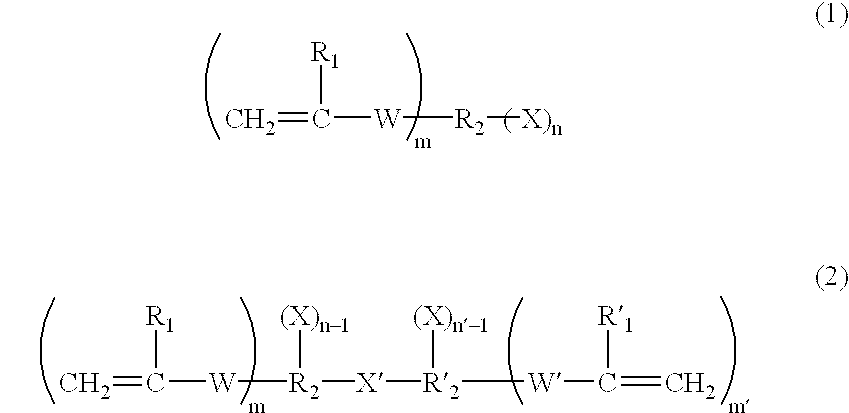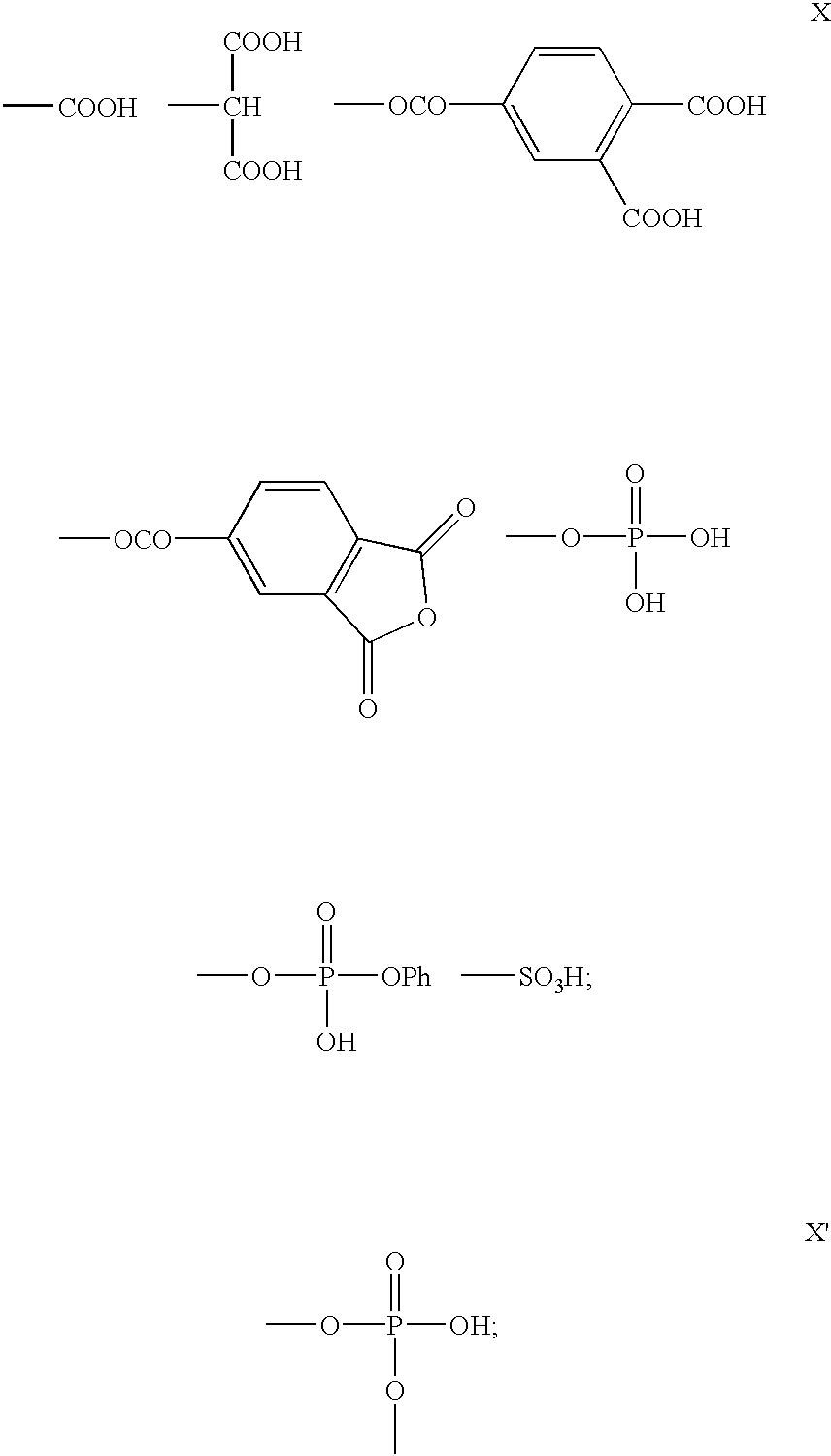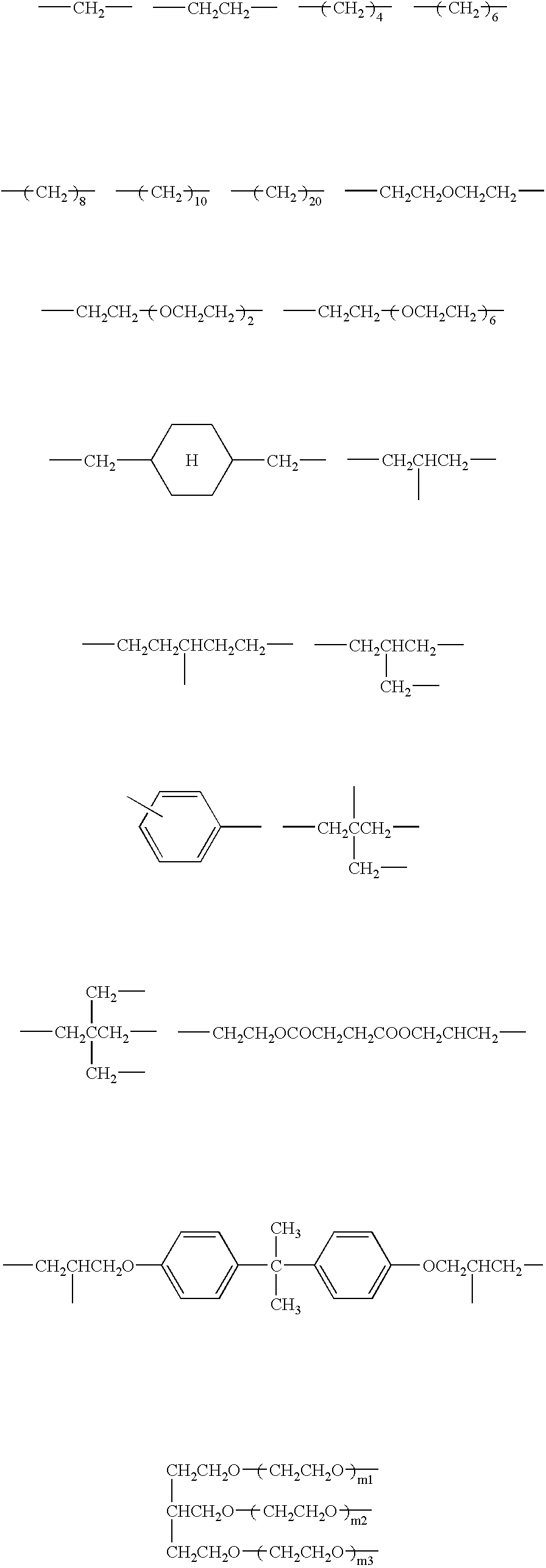Dental adhesive composition
a technology of adhesive composition and dental implants, applied in the field of dental treatment, can solve the problems of increasing the viscosity of the mixture, troublesome process, and inability to achieve the desired adhesive strength
- Summary
- Abstract
- Description
- Claims
- Application Information
AI Technical Summary
Benefits of technology
Problems solved by technology
Method used
Image
Examples
example 1
[0159] A dental adhesive composition of this invention comprising 5 wt parts of MAC10, 75 wt parts of MMA and 20 wt parts of HEMA as component (A); 93 wt parts of PMMA1 and 7 wt parts of PEMA1 as component (B); 3 wt parts of DMPT and 2 wt parts of BPO as component (C) was evaluated for a proper-viscosity reaching time, a working time, a curing time and adhesion performance as follows.
[0160] (1) Determination of a proper-viscosity reaching time and a working time
[0161] To a mixing dish was added dropwise 0.103 g of a liquid composition consisting of 5 wt parts of MAC10, 75 wt parts of MMA, 20 wt parts of HEMA and 3 wt parts of DMPT at 23.degree. C. Then, to the mixture was added 0.142 g of powders consisting of 93 wt parts of PMMA1, 7 wt parts of PEMA1 and 2 wt parts of BPO, and the mixture was stirred with a stirring spatula for several seconds at intervals of about 5 sec. A time until the mixture could become to be taken with the spatula (properly viscous state) was measured as a p...
examples 2 to 15
[0168] Dental adhesive compositions of this invention were prepared as described in Example 1, except that those shown in Table 1 were used as component (B), and their various properties were evaluated. The results are shown in Table 1, indicating that all of these dental adhesive compositions exhibit good operability and improved adhesion performance.
1 TABLE 1 Non-crosslinking polymer Curing Tensile adhesive spherical filler(wt parts) Proper-viscosity Working time strength (MPa) PMMA spherical filler PEMA spherical filler reaching time(s) time(s) (min) Enamel Dentin Ex. 1 PMMA1(93) PEMA1(7) 20 100 3.8 23.5 21.4 Ex. 2 PMMA2(95) PEMA1(5) 20 100 3.7 24.5 20.9 Ex. 3 PMMA3(93) PEMA1(7) 20 80 3.8 22.1 20.4 Ex. 4 PMMA4(90) PEMA2(10) 10 80 3.2 19 19.4 Ex. 5 PMMA1(83) + PMMA2(10) PEMA1(7) 20 100 3.8 22.9 21.2 Ex. 6 PMMA1(48) + PMMA3(45) PEMA3(7) 20 110 3.9 20.4 21.6 Ex. 7 PMMA2(73) + PMMA4(20) PEMA1(7) 20 100 3.6 20.1 21.3 Ex. 8 PMMA1(80) + PMMA4(18) PEMA2(2) 30 120 4.1 22.5 20.9 Ex. 9 PMMA...
example 16
[0173] A mixed liquid of component (A) consisting of 7.5 g of MMA, 0.5 g of MAC-10 and 2.0 g of HEMA and 0.3 g of DMPT as component (C), and a mixed powder of component (B) consisting of 4.6 g of PMMA1, 4.7 g of PMMA5 and 0.7 g of PEMA1 and 0.2 g of BPO as component (C) were separately prepared. Immediately before use, the mixed liquid and the mixed powder were kneaded at a powder / liquid ratio (wt / wt) of 1.4, to prepare a dental adhesive composition of this invention. An adhesive strength was determined as described in step (3) in Example 1, using the dental adhesive composition thus prepared. The results were as follows; an adhesive strength to a dental enamel: 23.7 MPa, and an adhesive strength to a dentin: 21.4 MPa. That is, a higher strength was observed for both materials.
PUM
| Property | Measurement | Unit |
|---|---|---|
| time | aaaaa | aaaaa |
| thickness | aaaaa | aaaaa |
| particle size | aaaaa | aaaaa |
Abstract
Description
Claims
Application Information
 Login to View More
Login to View More - R&D
- Intellectual Property
- Life Sciences
- Materials
- Tech Scout
- Unparalleled Data Quality
- Higher Quality Content
- 60% Fewer Hallucinations
Browse by: Latest US Patents, China's latest patents, Technical Efficacy Thesaurus, Application Domain, Technology Topic, Popular Technical Reports.
© 2025 PatSnap. All rights reserved.Legal|Privacy policy|Modern Slavery Act Transparency Statement|Sitemap|About US| Contact US: help@patsnap.com



